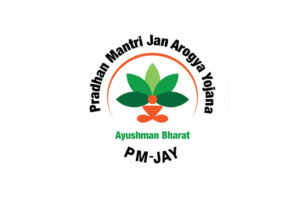Pradhan Mantri Jan-Aushadhi Yojana
09, Mar 2022

Prelims level : Schemes
Mains level : GS-II Issues relating to development and management of Social Sector or Services relating to Health, Education, Human Resources.
Why in News?
- Janaushadhi Diwas week has been observed from 1st March to 7th March 2022.
About the News:
- Theme of 4th Janaushadhi Diwas: “Jan Aushadhi-Jan Upyogi”
- Pharmaceuticals & Medical Devices Bureau of India (PMBI) is the implementing agency of Pradhan Mantri Bhartiya Janaushadhi Pariyojana (PMBJP).
- All the districts of the country have been covered under the scheme.
- Effective IT-enabled logistics and supply-chain systems for ensuring real-time distribution of medicines at all outlets have also been introduced.
- Product basket of PMBJP presently comprises 1,451 drugs and 240 surgical instruments.
What is National Health Authority (NHA)?
- National Health Authority (NHA) is the apex body responsible for implementing India’s flagship public health insurance/assurance scheme called “Ayushman Bharat Pradhan Mantri Jan Arogya Yojana”.
- It has been entrusted with the role of designing strategy, building technological infrastructure and implementation of “National Digital Health Mission” to create a National Digital Health Eco-system.
- National Health Authority is the successor of the National Health Agency, which was functioning as a registered society since 23rd May, 2018.
- Pursuant to Cabinet decision for full functional autonomy, National Health Agency was reconstituted as the National Health Authority on 2nd January 2019, under Gazette Notification.
- NHA is governed by a Governing Board chaired by the Union Minister for Health and Family Welfare headed by a Chief Executive Officer (CEO), an officer of the rank of Secretary to the Government of India, who manages its affairs. The CEO is the Ex-Office Member Secretary of the Governing Board.
- To implement the scheme at the State level, State Health Agencies (SHAs) in the form of a society/trust have been set up by respective States. SHAs have full operational autonomy over the implementation of the scheme in the State including extending the coverage to non SECC beneficiaries.
- NHA is leading the implementation for national Digital Health Mission NDHM in coordination with different ministries/departments of the Government of India, State Governments, and private sector/civil society organizations.
About Universal Health Coverage:
- The scheme will ensure Universal Health Coverage and focus on providing financial risk protection and ensuring quality and affordable essential health services to all individuals and communities.
- Universal Health Coverage (UHC) includes the full spectrum of essential, quality health services, from health promotion to prevention, treatment, rehabilitation, and palliative care.
- UHC enables everyone to access the services, protecting people from the financial consequences of paying for health services out of their own pockets and reducing the risk that people will be pushed to poverty.
What is Ayushman Bharat PMJAY Yojana?
- The PMJAY, world’s largest health insurance/assurance scheme fully financed by the government, provides a cover of Rs. 5,00,000 per family per year for secondary and tertiary care hospitalisation across public and private empanelled hospitals in India.
- Pre-hospitalisation and Post-hospitalisation expenses such as diagnostics and medicines are also included in the scheme.
- Coverage: Over 10.74 crore poor and vulnerable entitled families (approximately 50 crore beneficiaries) are eligible for these benefits.
- Provides Cashless Access to health care services for the beneficiary at the point of service.
What is its Significance?
- Helps reduce catastrophic expenditure for hospitalizations, which pushes 6 crore people into poverty each year.
- Helps mitigate the financial risk arising out of catastrophic health episodes.
Eligibility Criteria’s:
- No Restrictions on family size, age or gender.
- All pre–existing conditions are covered from day one.
- Covers up to 3 days of pre-hospitalization and 15 days post-hospitalization expenses such as diagnostics and medicines.
- Benefits of the scheme are portable across the country.
- Services include approximately 1,393 procedures covering all the costs related to treatment, including but not limited to drugs, supplies, diagnostic services, physician’s fees, room charges, surgeon charges, OT and ICU charges etc.
- Public hospitals are reimbursed for the healthcare services at par with the private hospitals.
Challenges and Concerns:
- Medical audits have also revealed that private hospitals are more likely to indulge in fraud and abuse than public hospitals and more likely to discharge patients early post-surgery to cut Costs.
- Ensuring the Accountability of Private Hospitals to provide efficient and high-quality care is a pre-eminent challenge for scheme Implementation.
- There is huge State-wise variation in the share of Empanelled private hospitals from less than 25% in most of the north-eastern and hill States to 80% in Maharashtra.
- Private hospitals have fewer beds than public hospitals and are more likely to be empanelled for surgical packages and super-specialties.







